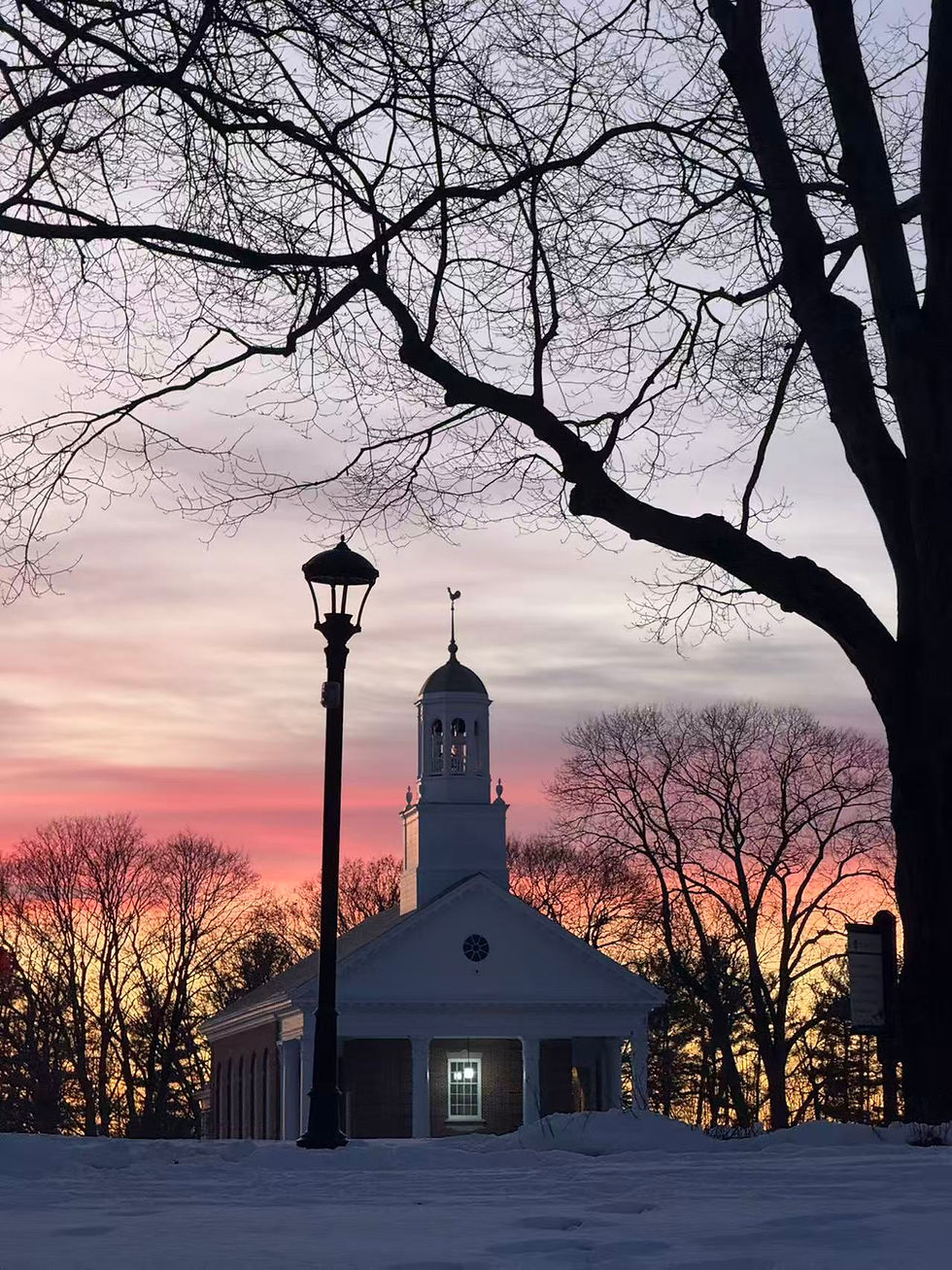What Happened to Square Dance?
- Terri Qi
- Sep 18
- 3 min read
A quintessential Middlesex tradition has lost its flair. Here’s how to redress the flagging institution.

Contrary to what some of our fine zebras dressed in American flag overalls and the playing of Cotton Eye Joe might make you think, the square dance is not some exotic southwestern ritual. Rather, it is a much more universally American activity, with structural roots in 17th century English folk dances and the early 19th century French quadrille. The distinctive “caller” came to be when enslaved African Americans made to fiddle for dances began to call out moves to the participants. In the 1920s, Henry Ford would help popularize the dance when he hired hundreds of dancing instructors to teach folk dancing—as part of an effort to push back against the jazz that “invade[s] decent homes and set the young people of this generation imitating the drivel of morons…Jazz is a Jewish creation” (a different story). LGBTQ square dancing started in 1977. As of now, 31 states, including Massachusetts, have designated the square dance as their state folk dance.
At Middlesex, square dance is none of the above. For non-seniors, it has been naught but an opportunity to dress up in the mind’s conception of “Southern”, desperately attempt to hear the caller in a cramped gym while pretending to have fun, and eventually dissolve into the obligatory rave. Seniors might remember that night three years ago in the BAP courtyard, when we formed coherent groups, do-si-do’d around our new friends, and ran through lines with purpose. At the end the caller tried to pull everyone with hands linked into a giant formation but ultimately failed. It was slightly chaotic and not exactly what one would consider a square dance, as there are traditionally only four couples in a group, but it was special enough to get a glimpse into the common saying that “square dancing is friendship set to music.” These days the thrill is gone. I have not done a single do-si-do in three years. How did it get so bad?

The main problem is that the square dance has been stuck in the gym, a cramped place with poor acoustics. Of course the weather is out of our control, but adapting to the gym environment is nonetheless an effort that has fallen short year after year. Part of this failure is in the sound system. While sound can travel over the heads of people and reach the ears of many in an outdoor setting, sound in an enclosed space like the cage will bounce strangely off the ceiling and walls and become muddled in the mass of bodies. In addition to the two speakers placed at the front of the room, two more speakers at the back would have made the calls more audible to the entire group. Perhaps those could have been set up instead of the decorative piles of hay bales.
Even if placing down more speakers is impossible, more could have been done to instruct students on how to dance. If an article describing the basic moves, the structure of the dance, and how to respond to calls were attached to the notice email, responsible students (seniors) could have acted as group leaders, interpreting the difficult-to-hear calls. I, as a senior, did not have any information and was just as confused as everyone else, however helpful I wished to be. In the future, Stactivities could communicate with the square dance facilitators and create such a document, and also include that content in their assembly announcement.
Finally, consider rescheduling, but given the turgidity of our calendar and the booking system with the square dance event folk, this option is likely impossible.
When I had the good fortune to encounter Ms. Speers leaving this year’s square dance early, she suggested that we consider rethinking square dance as a whole, while retaining all that the event stands for. As the last three years have proven, square dance at Middlesex is much like the grand old America it represents: it falls short again and again and again, but we can dream it to be better and learn to love it.
Terri Qi ‘26
















Comments